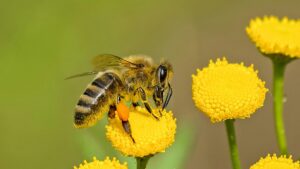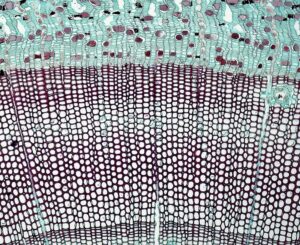STNMS Screening Test – 2024
STNMS Screening Test – 2024
Sant Tukaram National Model Junior College is the Branch -2 of the ” Rajarshi Shahu College Latur
which is among the Top most Institute of the India for the preparation of NEET & JEE Examination
STNMS Conduct Screening test every year to take admission to the college
here is the Syllabus for STNMS Screening Test 2024 for PCB Group it contain Mainly 2 section namely Section A & Section B Section A Consist English – 40 Marks , Mental Ability -10 Marks , and Basic Mathematics – 20 Marks . Nature of these question will be objective types all the question will check the Knowledge of the candidate .
PCB Syllabus –
Section ‘A’ (40 Marks) –
I) English (10 Marks)
STNMS Screening Test
English Syllabus –
SYLLABUS –
1) Tenses
2) Subject – Verb Concord
3) Determiners
4) Reported Speech
5) Degrees Of Comparison
II) Mental Ability (10 Marks) –
STNMS Screening Test –
Mental Ability –
1) Number Series
2) Coding & Decoding
3) Blood Relations
4) Day & Date
5) Directions
III) Basic Mathematics (20 Marks)
STNMS Screening Test –
Basic Mathematics Syllabus
1) Algebric Identities
2) Introduction to Trignometry
3)Logarithms, Defination, Properties Of Logarithms
4 )Speed , Time & Work
5 )S.I. Units And Symbols
Section ‘B’ (320 Marks)
I) Physics (80 Marks)
1) Motion
-Distance and displacement
-Uniform and non-uniform motion along a straight line
-Speed, Velocity & acceleration
-Distance-time and velocity-time graphs for uniform motion and uniformly accelerated
motion
-Elementary idea of uniform circular motion.
2) Force And Laws Of Motion
-Force And Motion
-Balanced And Unbalanced Forces
-Types Of Inertia
-Newton’s Laws Of Motion
-Principle Of Conservation of momentum
-Force and Acceleration.
3) Gravitation
-Universal Law Of Gravitation
-Acceleration Due To Gravity
-Mass And Weight
-Free Fall
-Thrust and Pressure
-Archimedes’ Principle
-Buoyancy.
4) Work & Energy
-Work done by a Force, Method To Calculate Work
-Kinetic Energy & Potential Energy
-Power & Energy
-Law of conservation of energy
5) Sound
-Nature of sound and its propagation in various media
-Speed of sound
-Characteristics of sound
-Range of hearing in humans;
-Ultrasound, reflection of sound & echo.
6) Electricity
–Electric current
–Potential difference and electric current
–Ohm’s law
–Resistance, Resistivity & Factors on which the resistance of a conductor depends
Series combination of resistors, parallel combination of resistors and its applications in
daily life
–Heating effect of electric current and its applications in daily life
–Electric power, Interrelation between P, V, I and R
7)Magnetic Effect of Current
-Magnetic field, field lines
-Field due to a current carrying conductor
-Field due to current carrying coil or solenoid
-Force on current carrying conductor
-Fleming’s Left Hand Rule
-Direct current. Alternating current
-Frequency of AC. Advantage of AC over DC
-Domestic electric circuits
8)Light And Optical Instrument
-Reflection of light by curved surfaces
-Images formed by spherical mirrors
-Centre of curvature, principal axis, principal focus, focal length
-Mirror formula & magnification
-Refraction; Laws of refraction, refractive index
-Refraction of light by spherical lens
-Image formed by spherical lenses
-Lens formula & Magnification
-Power of a lens
9)Human Eye & The Colourful World
-Functioning of a lens in human eye
-Defects of vision and their corrections
-Applications of spherical mirrors and lenses
-Refraction of light through a prism
-Dispersion of light
-Scattering of light & applications in daily life
II) Chemistry (80 Marks)
Syllabus
1) Pollution Of Air and Water
-Air Pollution
-Green House Effect
-Water Pollution
-Soil Pollution
-Prevention And Control of Pollution
2) Inside The Atom
-Types Of Substances
-Dalton Theory, Various Atomic Models
-Bohr’s Atomic Model
-Sub-Atomic Particles
-Atomic Number, Mass Number, Isotopes, Isobars
-Electronic Configuration of Elements
-Nuclear Reactor
3) Composition Of Matter
-Composition Of Matter
-Characteristics Of States of Matter
-Types Of Elements, Types of Compounds, Types of Mixture
-Types Of Solutions- True and Colloidal Solution, Cross Rule for Writing Formulae
4) Metals And Non-Metals
-Physical Properties
-Chemical Properties
-Uses
5) Chemical Change and Chemical Bond
-Natural Chemical Changes
-Chemical Bond
-Ionic Bond, Covalent Bond
6) Study Of Gas Law
-Properties Of Gases, Liquids and Solids
-Absolute Zero, Standard Temperature Scale
-Pressure, N.T.P. And S.T.P.
7)Measurement Of Matter
-Laws of Chemical Combination
-Atom – Shape, Mass, Valency
-Molecular Mass, Atomic Mass, Formula Mass
-Radicals, Ions
8) Acids Bases and Salts
-Introduction
-Indicator
-Effects of Acid and Bases on Litmus Paper
-Arrhenius Theory of Acids and Bases
-Concentration of an Acid or a Base
-PH of Solution
-PH of an Acid and a Base
-Salts, Types of Salts, Hydrolysis, Degree of Hydrolysis
9) Carbon – An Important Element
-Carbon Occurrence, Properties and Allotropes
Hydrocarbons
10) Substances In Common Use
-Important Salts in Day-to-Day Life-NaCl, NaHCO3, CaOCl2, Na2CO3, Soap
-Radioactive Substances
-Some Chemical Substances in Day-to-Day Life
-Food Colors & Essence
-Dyes, Artificial Colours,
-Deodorants, Teflon
-Powder Coating, Anodizing
-Ceramics, Porcelain, Bone China
11) Ceramics, Porcelain, Bone China
-Chemical Reactions and Equations
-Chemical Reactions
-Balancing A Chemical Equation
-Rules of Writing Chemical Reaction
-Type of Chemical Reaction
-Trend In Periodic Properties
12) Metallurgy
-Physical And Chemical Properties of Metals
-Physical And Chemical Properties of Nonmetals
-Various Concepts of Metallurgy
-Reactivity Series of Metals
-Ionic Compounds
-Corrosion and its prevention
13) Carbon Compounds
-Valency, Catenation of Carbon Formation of Double and Triple Bond
-Isomerism Including Single, Double and Triple Bond
-Homologous Series of Alkane, Alkene, Alkyne and Relation With
Molecular mass.
-Nomenclature of Simple Compounds Having Functional Groups
-Including Double Bond and Triple Bond
-Hydrocarbon, Method of Preparation of Alkane, Alkene and Alkyne.
And Chemical Properties and Uses.
-Preparation Properties (Physical and Chemical Both) of Alcohol (Ethanol) And Carboxylic acid (Acetic Acid) Uses of Alcohol and Acetic Acid
III) Biology (160 Marks)
Syllabus BIOLOGY
1)Fundamental Unit Of Life
-What Are Living Organism ?
-What Is Cell Made Up ?
-Structure And Difference Between Animal And Plant Cell.
Cell Theory.
-Plasma Membrane And Cell Membrane.
-Cell Wall, Nucleus, Cytoplasm, Cell Organelles, Endoplasmic
Reticulum. (Er), Golgi Apparatus,
Lysosomes, Mitochondria, Plastid, Vacuoles.
2) Cell Cycle And Cell Division
-Cell Cycles Phases In Brief.
-Mitosis And Its Phases
-Meiosis And Its Phases
-Signification.
3) Tissue
-Animal Tissue –
-Types Of Epithelial Tissue, Connective Tissue and its types, Muscular Tissue and its types,
Nervous Tissue.
-Plant Tissue –
Meristematic Tissue, Permanent Tissue, Types Of Simple And Complex
Tissues
4) Life Processes In Living Organism
-Transportation In Plants – Transportation Of Water , Food And Other Substances,
-Respiration : Aerobic And Unaerobic Respiration
-Energy From Different Food Components.
-Photosynthesis
Nutrition – In Plants And Animals
-Circulation
-Excretion In Plants And Human Beings, Dialysis .
-Coordination- Co-Ordination In Plants And Human.
-Nervous Control – Types Of Neurons, Human Nervous System
-Reflex Action,
-Chemical-Control and co ordination.
Reproduction
-Asexual Reproduction- Binary Fission, Multiple Fission, Budding, Fragmentation,
-Regeneration, Vegetative Propagation, Spore
-Formation, Tissue culture.
-Sexual Reproduction- Gametes Formation, Fertilisation ,
-Sexual Reproduction In Plants.
-Sexual Reproduction In Human Being- Male And Female Reproductive System, Menstrual
-Cycle, Gametes Formation, Fertilisation,
-Reproductive Health
–Plant Growth, Structure Of Seed, Type Of Germination, Germination of Seed.
-Flower Placentation And Type Of Inflorescence .
-Pollination- Self Pollination , Cross Pollination, Agents Of
–Pollination.

-Respiratory System In Humans
-Capacities Of Lung, Breathing, Respiratory Volumes.
Factors Affecting Rate Of Photosynthesis

5)Heredity And Variation
Inheritance – Heredity, Hereditary Changes.
Inheritance Of Traits And Expression Of Traits- Chromosomes, Types
Of Chromosome.
Mendel’s Principles Of Heredity- Monohybrid Cross, Dihybrid Cross
Sex Determination.
Heredity And Variation
Important Terms To Understand Mendel’s Work
Genes , Alleles , Homozygous , Recessive, Dominant, Mendels Crossing Technique .
Mendels Law Of Inheritance
Law Of Dominance , Law Of Segreegation, Law Of Independent Assortment , Back Cross, Test
Cross, Incomplete Dominance , Co-Dominance, Multiple Alleles -Abo Blood Group,
Fertilisers ( Insecticide, Organic Farming)
Cultivation Of Medicinal Plants.
Tissue Culture

Changes In Agriculture Management Due To Biotechnology
Application Of Biotechnology In Floriculture, Nurseries And Forestry,
Agritourism,
Agro Complementary Occupation
Animal Husbandry, Poultry Farming, Apiculture, Sericulture
6) Health And Disease / Why Do We Fall Ill ?
-Health, Immunity
-Disease And Its Causes-Acute And Chronic Disease, Causes Of Disease,
-Infectious And Non Infectious Diseases
-Disease Causing Agents, Means Of Spread
-Treatment And Prevention (T.B., Typhoid, Hepatitis, Rabies, Polio, Aids, diarrhoea.)
7) Energy Flow In An Ecosystem
-Food Chain And Food Web,
-Energy Pyramid.
-Energy Flow And Its Importance.
-Producers Consumers And Decomposer.
8) Environmental Management
-Solid Waste Management-Biodegradable Waste, Non Biodegradable
https://en.wikipedia.org/wiki/Waste_management
-Waste, Necessity Of Solid Waste Management,
-Seven Principles Of Solid Waste
-Management, Period Required For Degradation Of Waste.
9) Improvement in food resources
-Significance, Crop variety improvement, Crop Protection Management, Crop Protection
Management.
-Animal husbandry Practices: Cattle farming, Poultry Farming, Fish Farming, Apiculture
